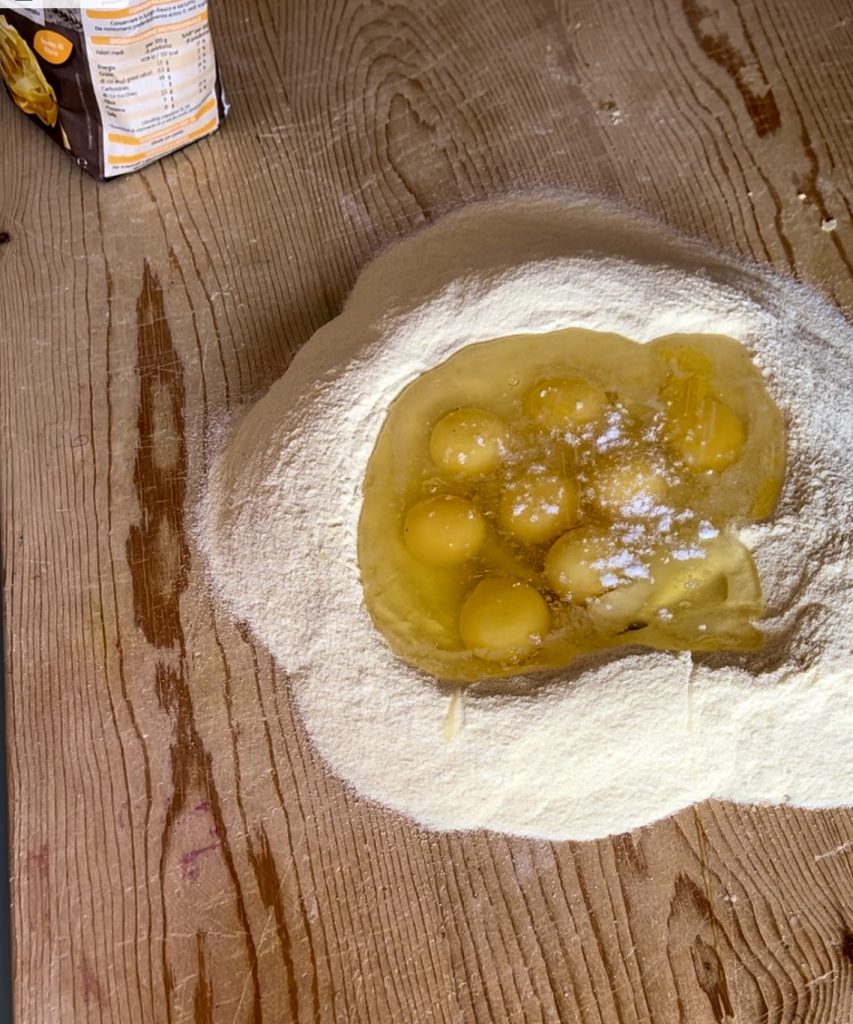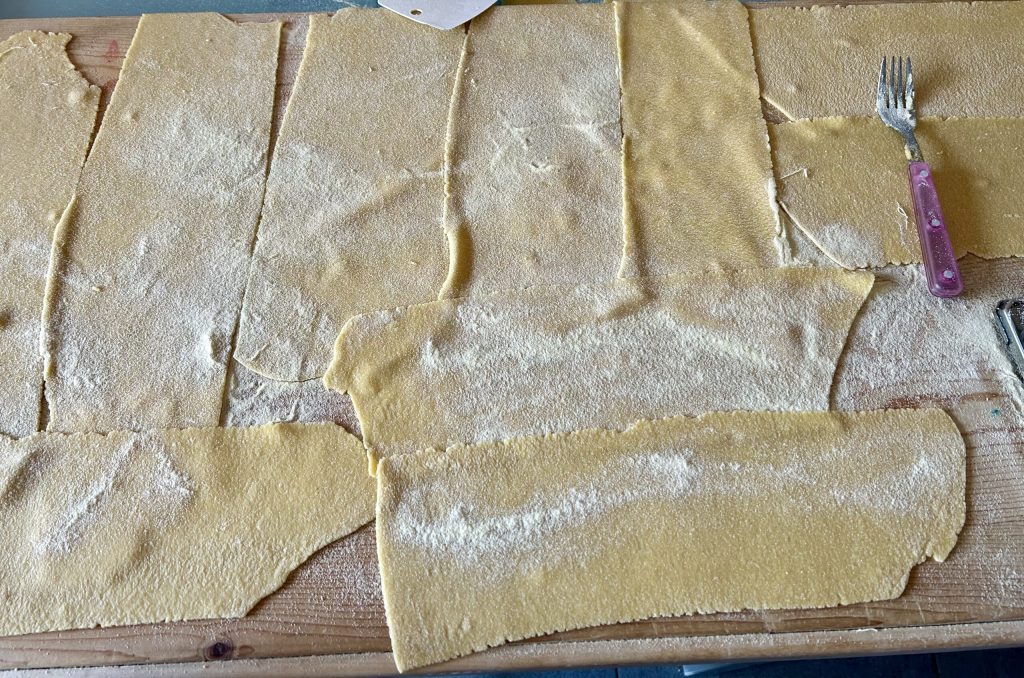Homemade semolina durum wheat tagliatelle or fettuccine prepared using the pasta machine, a fantastic manual pasta device that also helps knead better. The difference between tagliatelle and fettuccine should be the different thickness and width, the former should be wider and thicker. My mom, who taught me how to make pasta at home, called these fettuccine and I will continue to call them that ❤️.
The durum wheat flour and eggs come together in a beautiful golden dough, unique in texture, perfect for cutting by knife or with the pasta machine like I did.
Using the pasta machine allows for precise cutting and perfect dough because every time the pasta passes through the rollers, it is practically re-kneaded. Of course, I really appreciate everyone who can roll out the dough by hand, but I take a long time with the rolling pin, and I’m never precise with the thickness.
For those who love to get their hands in the dough, I also recall

- Difficulty: Easy
- Cost: Economical
- Rest time: 30 Minutes
- Preparation time: 35 Minutes
- Portions: 8
- Cooking methods: No Cooking
- Cuisine: Italian
- Energy 449.35 (Kcal)
- Carbohydrates 79.58 (g) of which sugars 0.00 (g)
- Proteins 22.09 (g)
- Fat 7.53 (g) of which saturated 2.68 (g)of which unsaturated 4.11 (g)
- Fibers 0.00 (g)
- Sodium 366.65 (mg)
Indicative values for a portion of 168 g processed in an automated way starting from the nutritional information available on the CREA* and FoodData Central** databases. It is not food and / or nutritional advice.
* CREATES Food and Nutrition Research Center: https://www.crea.gov.it/alimenti-e-nutrizione https://www.alimentinutrizione.it ** U.S. Department of Agriculture, Agricultural Research Service. FoodData Central, 2019. https://fdc.nal.usda.gov
Ingredients
- 32 oz re-milled durum wheat semolina flour
- 8 eggs
- 2 pinches salt
Tools
To make these fettuccine or tagliatelle, my advice is to use the pasta machine, a manual pasta machine that makes preparation easier and faster.
- 1 Pasta Machine
- 1 Dough Scraper
Preparation
On a work surface, pour 800g of semolina flour, and with your hand, create a large well in the center. In the well, add the 8 eggs and salt. With the help of a fork, start to absorb the flour into the eggs, being careful not to let them spill out. As the dough gains consistency, use a dough scraper first, then just your hands to knead everything into a compact, non-sticky dough ball. Use all the flour that I indicated.

Once you have the dough ball, divide it into at least 8/9 parts with the dough scraper, and using the remaining flour, start passing each piece through the pasta machine rollers. My advice is to generously coat each piece in flour before putting it in the machine. Pass each piece through at the maximum thickness at least three times, folding the pasta on itself each time before passing it again; this will allow you to knead the pasta better and make it homogeneous. Continue dusting each piece with flour throughout all the steps. Once all the pieces are rolled out at maximum thickness, pass them again to the thickness you want for your fettuccine; I rolled them to number 2. Let the pasta strips dry for about half an hour after the second pass.

After about half an hour, you can cut the sheets. They need to dry but not be too dry; otherwise, they won’t cut but will break. Depending on the temperature, adjust the resting time by touching them; check that they are drier but not stiff. Alternatively, if you’re afraid of making a mistake, thoroughly flour each sheet and cut it immediately.
Install the cutter piece, and pass each sheet through, being careful to keep it flat while passing through the rollers. After cutting, let them dry on the work surface without piling them up too much and keeping them stretched out. Then cook your fettuccine in plenty of salted water and enjoy with your favorite sauce.
NOTES
Homemade fettuccine is perfect when cooked shortly after cutting. If you want to keep them until the next day before cooking, I recommend forming nests with your hands and storing them in the fridge covered with plastic wrap. When you are ready to cook them, don’t try to unravel them; drop them into boiling water as they are; they will unravel while cooking.
An additional tip from the aunt: when you pass the sheets for the second time in the pasta machine, they become longer. To avoid fettuccine that are too long, which could break during cooking, divide each piece into two so they already have the right length.
If you liked the recipe or have any questions, feel free to comment here or on social media Facebook, Pinterest, Instagram, and X.

